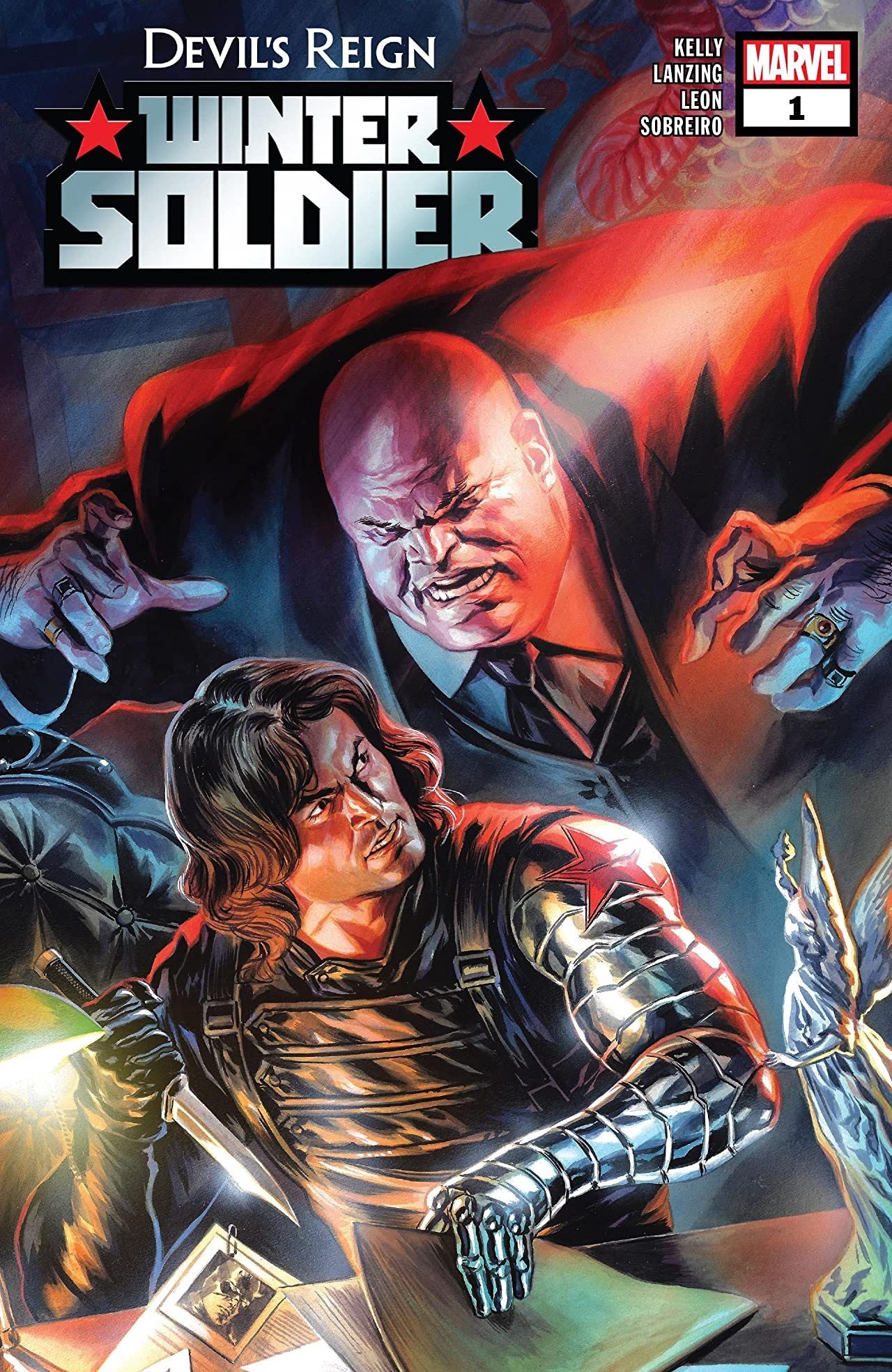Marvel's Devil's Reign: Winter Soldier #1
- WRITER
- Jackson Lanzing, Collin Kelly
- Artist
- Nico Leon
- Letterer
- Joe Caramagna
- Cover Artist
- Felipe Massafera
- Publisher
- Marvel Comics
- Price
- 4.99
- Release Date
- 2022-01-26
- Colorist
- Felipe Sobreiro
Walt Disney once said, "If you can dream it, you can do it." Well, that's undoubtedly true in Devil's Reign: Winter Soldier #1, a dazzling one-shot by Jackson Lanzing, Collin Kelly, and Nico Leon. The Marvel comic pits Bucky Barnes against the Kingpin in a nightmare of his own making. The issue follows the Winter Soldier as he breaks into Wilson Fisk's home to retrieve information on his past, only to find that the Mayor of New York City is more dangerous than any secret. It is an imaginative story that raises the stakes for Kingpin's war on masked vigilantes and simultaneously sets Bucky up for greater things to come in the Marvel Universe.
Devil's Reign: Winter Soldier #1 opens with the Kingpin preparing for a night by himself. As he falls asleep, Wilson repeats aloud to himself that he doesn't need to know Daredevil's secret identity. At the same time, the Winter Soldier sneaks through the defenses of Gracie Mansion while facing visions of his past. Though Bucky easily enters the building, he quickly realizes getting out alive will be much more challenging. Can the Winter Soldier survive a fight against a man who fights with the unrelenting force of a nightmare?
Lanzing and Kelly show an excellent understanding of the deeper layers of their lead characters in Devil's Reign: Winter Soldier #1. Looking past the surface tension of the Kingpin and Winter Soldier's conflict is a story about two men whose pasts control them -- albeit, in very different ways. For Bucky, the past is something he accepts and wants to learn from, so he can make better future decisions. Fisk contrasts this perspective with struggling to come to terms with things he can't change. Fisk's emotional shortcoming causes him to lash out at those around him and puts Fisk in a self-destructive rampage that threatens to destroy everything he is fighting to protect. These reflections help give the comic book value outside of the larger Devil's Reign event. The story grapples with concepts that readers can relate to on a personal level, even if they aren't the mayor of a major city or a former mind-controlled assassin.
Nico Leon turns the landscape of Gracie Mansion into a twisted reflection of its combatants in Devil's Reign: Winter Soldier #1. The characters' perspectives inform every visual, with hallways dragging into infinity, visions of the past overlaying the present, and darkness enveloping Fisk and Bucky. Leon shows a versatile set of skills in this issue, as he uses dramatic shadows, thin linework, and creative silhouettes to blur the lines between dreams and reality. The art in this issue is surreal in the truest sense, enhancing the thematic values of the plot.
Like Leon, colorist Felipe Sobreiro transforms Devil's Reign: Winter Soldier #1 into an ethereal nightmare. Sobreiro uses a traditional color palette that casts Bucky's espionage exploits in muddied greys and muted blues in the story's opening pages. However, once the hero enters Gracie Mansion, the colors switch to a fiery wash of red, orange, and yellow. These tones make the reader question what is real and what is just in the Winter Soldier's mind. They also amplify the story's main threat and create a palpable sense of danger. This artistic decision is one of the issue's greatest strengths and presents the story in a way that only comics can.
Devil's Reign: Winter Soldier #1 is a brilliant example of how to use an event tie-in to tell insightful stories about the overall Marvel Universe. Lanzing, Kelly, Leon, and Sobreiro use an explosive fight between two very different characters to highlight their similarities and explore how one's past comes back to haunt them. This issue also thrillingly sets Bucky up for Captain America: Sentinel of Liberty. While Daredevil will always be Kingpin's most-heated rival, Devil's Reign: Winter Soldier #1 will leave fans demanding for Fisk vs. Bucky: Round Two.

